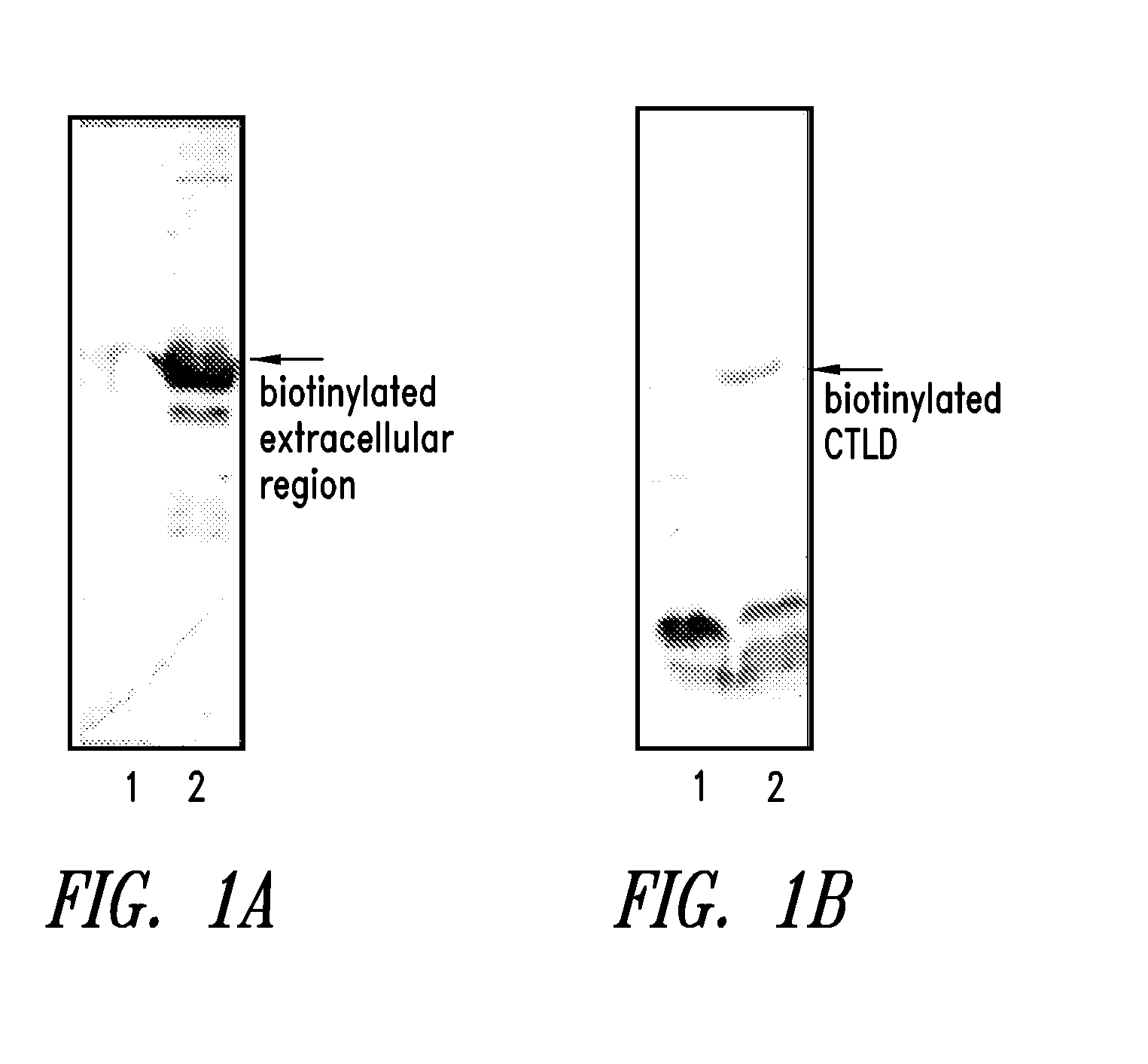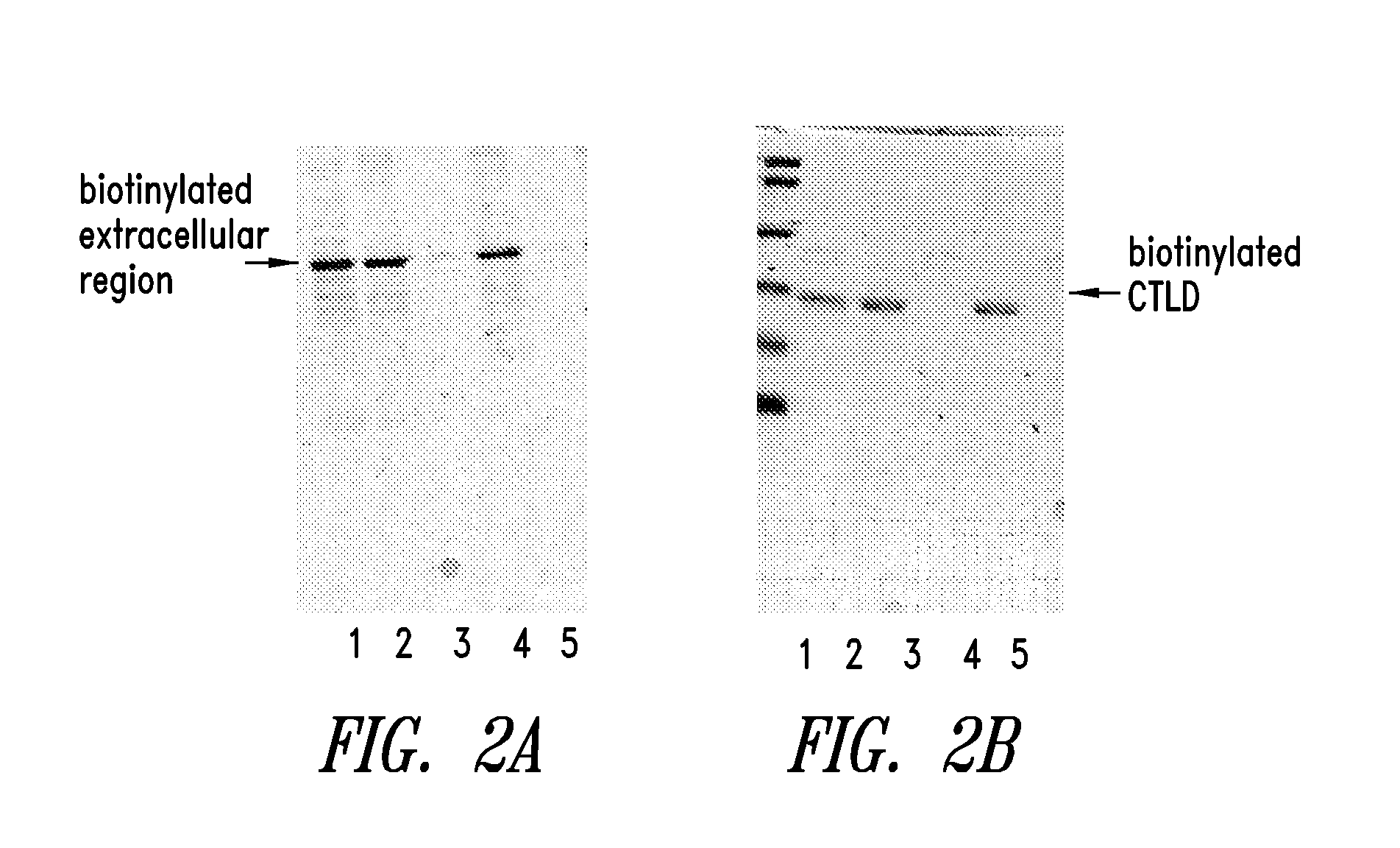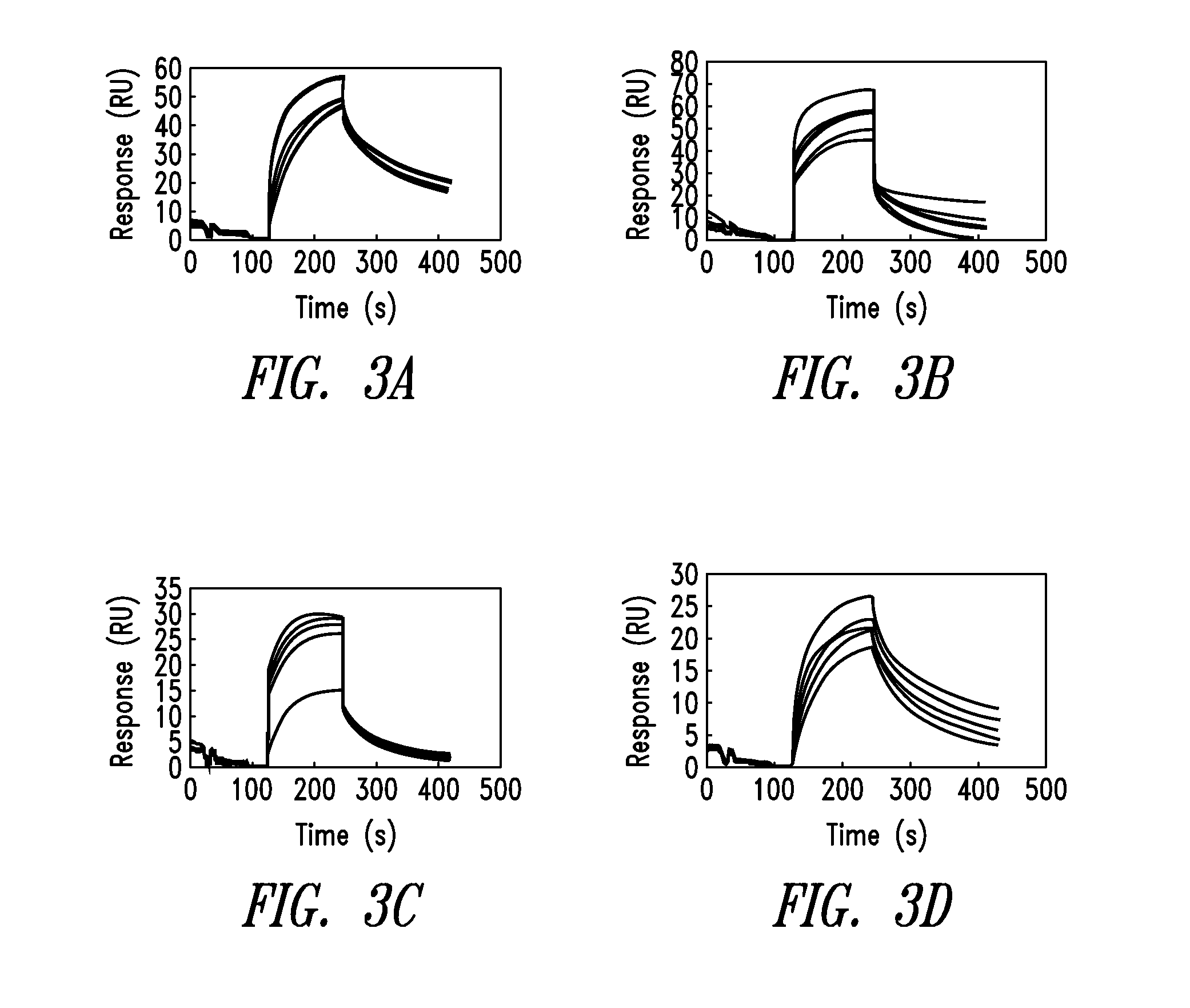Method to produce a receptor chip using biotinylated protein
a technology of biotinylated protein and receptor chip, which is applied in the field of methods, can solve the problems of difficult to prepare a large amount of a native receptor protein, and difficult to obtain a soluble protein, etc., and achieves the effect of easy immobilization
- Summary
- Abstract
- Description
- Claims
- Application Information
AI Technical Summary
Benefits of technology
Problems solved by technology
Method used
Image
Examples
example 1
[0151]Hereinafter, the present invention will be described in detail with reference to the examples, but it should be noted that the present invention is not limited to these examples.
[0152]Expression of a biotinylated extracellular region, and a biotinylated CTLD of hLOX-1
[0153]In the present example, the method for expressing an extracellular region, and a CTLD of hLOX-1 as a biotinylated protein is considered.
[0154](1) Construction of an Expression System for a Fusion Protein of a Biotinylated Polypeptide and an Extracellular Region or CTLD of hLOX-1
[0155]A DNA fragment encoding an extracellular region or CTLD of hLOX-1 is prepared by a usual method of the PCR method. Restriction enzyme site NruI is attached to 5′ terminal, and restriction enzyme site EcoRV is attached at the 3′ terminal. A PCR product is extracted and processed with both of the restriction enzymes. Then, the PCR product is inserted into pBS, a cloning vector, and confirmed by a DNA sequencing whether there is no...
example 2
Reconstruction of the Biotinylated Extracellular Region and the Biotinylated CTLD to Soluble Proteins
[0161]It is shown that the expressed biotinylated extracellular region and the biotinylated CTLD are not present in the soluble fragment in the E. coli, and most of them are accumulated as an inclusion body. Therefore, the biotinylated extracellular region, and the biotinylated CTLD is refolded from inclusion body by an artificial chaperone method.
[0162]The inclusion body is processed at room temperature for one hour with 6 M of guanidine hydrochloride solution including DTT of a final concentration of 40 mM, and erroneous structure is completely unfolded. Then, a detergent solution having a volume 70 times that of unfolded solution (PBS solution(—) including 0.1% CTAB or SB3-14, DL-cystine having a final concentration of 2 mM) is added, and reacted at room temperature for one hour. Then, 24 ml of reaction solution is removed, and 6 ml of 3% CA solution is added and reacted for anoth...
example 3
[0165]The successfully refolded biotinylated extracellular region or biotinylated CTLD was immobilized onto a sensor site of a device capable of detecting the binding by surface plasmon resonance in order to construct a sensor for detecting a modified LDL or the like. Thereafter, the actual binding of a ligand was investigated. As the surface plasmon resonance device, BIACORE (manufactured by BIACORE) and IAsys (manufactured by Hitachi High-Technologies Corporation) were employed.
[0166](1) The reconstituted biotinylated extracellular region was immobilized on a streptavidin sensor chip of BIACORE so that a portion of the region involved in ligand recognition was oriented toward the outside. After the chip was inserted into the BIACORE main body, the binding of modified LDLs (oxidized LDL and acetylated LDL) with the protein was measured. In the case of the device utilizing the principle of surface plasmon resonance, the binding of the ligand was detected as a result of an increase i...
PUM
| Property | Measurement | Unit |
|---|---|---|
| Degree of polymerization | aaaaa | aaaaa |
| Ionicity | aaaaa | aaaaa |
Abstract
Description
Claims
Application Information
 Login to View More
Login to View More - R&D
- Intellectual Property
- Life Sciences
- Materials
- Tech Scout
- Unparalleled Data Quality
- Higher Quality Content
- 60% Fewer Hallucinations
Browse by: Latest US Patents, China's latest patents, Technical Efficacy Thesaurus, Application Domain, Technology Topic, Popular Technical Reports.
© 2025 PatSnap. All rights reserved.Legal|Privacy policy|Modern Slavery Act Transparency Statement|Sitemap|About US| Contact US: help@patsnap.com



